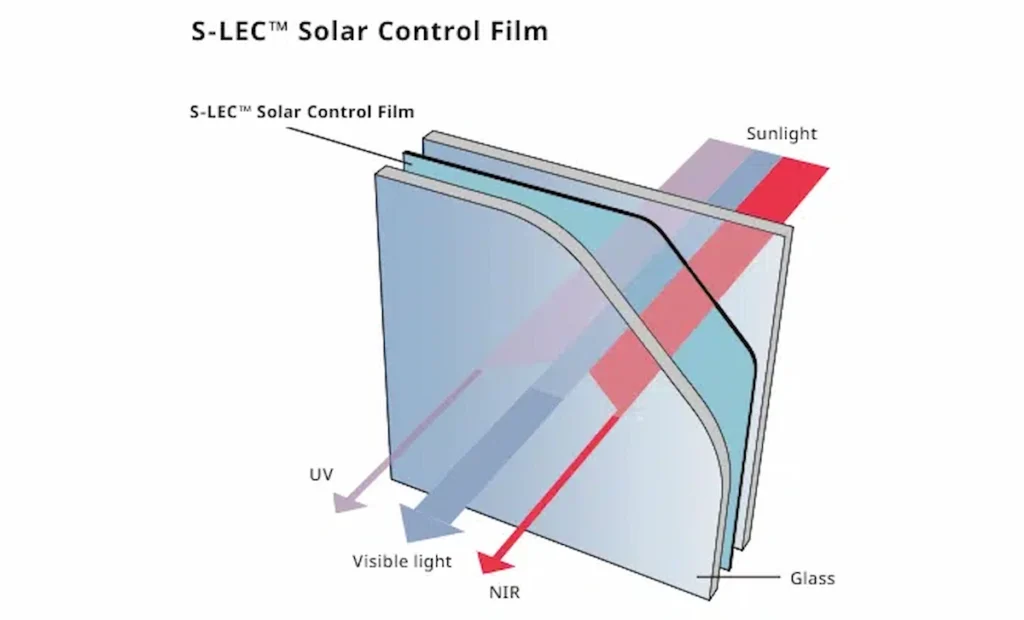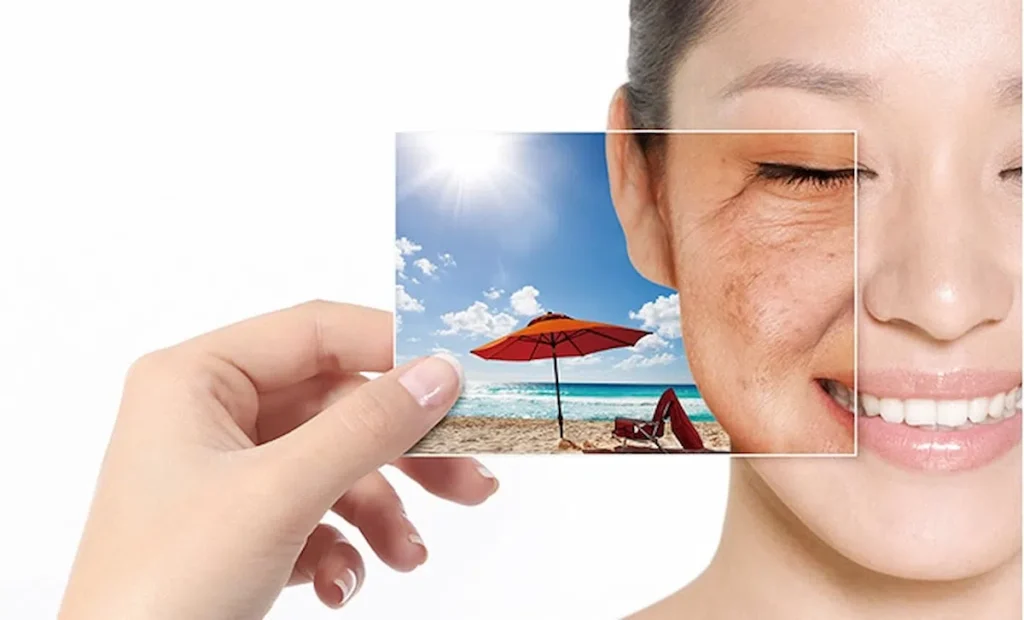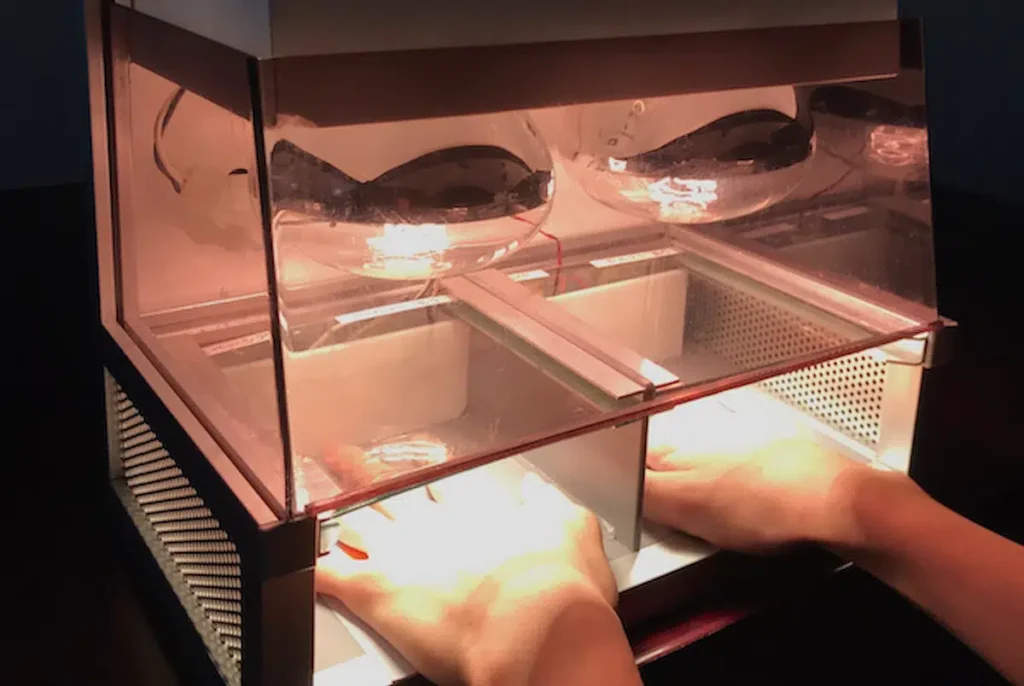- Industries
- Solutions
- About SEKISUI S-LEC
- Downloads
- Contact Us
- Subscribe


Sunlight and the Earth
Sunlight is a source of energy that brings great benefits to our lives. At the same time, the ultraviolet (UV) rays and near-infrared (NIR) rays in sunlight are the cause of “photoaging“, a process that leads to skin aging. SEKISUI S-LEC, an industry leader in the development of interlayer film technology for laminated glass, has developed S-LEC™ Solar Control Film. This film blocks the sun’s burn-inducing UV rays and NIR rays, protecting skin from “photoaging.”

80% of skin aging, such as changes in pigmentation, loss of elasticity, blemishes, wrinkles and sagging, is caused by “photoaging” from the sun’s rays. As evidence, even with age, elderly people have almost no blemishes or wrinkles on the parts of their skin that have not been exposed to the sun. In addition, unprotected exposure to sunlight not only causes skin aging, but also increases the risk of skin cancer.

The sunlight that reaches the Earth consists of UV rays, visible light rays and infrared rays (10% UV, 40% visible light and 50% infrared).
Until now, skin photoaging was thought to be due to the effects of the UV rays in sunlight, but recent research has revealed that NIR rays are also involved in this process. The longer the wavelength of light, the more it penetrates deep into the skin and body. NIR rays have a longer wavelength than UV rays and reach the deeper layers of the skin (the dermis), subcutaneous tissue, connective tissue (fascia) and muscle layer, causing wrinkles and sagging. To prevent this, it’s important to take measures to protect against not only UV rays but also NIR rays.

In the epidermis, pigment cells (melanocytes) react to UVB by producing melanin. This dark UV-absorbing pigment is passed on to the surrounding epidermal cells to protect the skin. However, excessive exposure to the sun can cause skin blemishes, causing a large amount of melanin to be produced and accumulate in the epidermal cells.

The dermis contains collagen fibers and elastin (elastic fibers), which stretch to keep the skin resilient and elastic.
However, continued exposure to Type A UV (UVA) rays or NIR rays can cause the collagen and elastin fibers to break down and lose their function, weaken the support provided by subcutaneous tissue, and result in wrinkles and sagging.
If you feel a stinging sensation from being in the sun, it’s inflammation (sunburn) caused by UV rays that appears after a few hours of exposure to sunlight. However, if you feel a more subtle tingling sensation from being in the sun, this is caused by NIR rays raising the temperature of the surface of your skin. NIR rays can even penetrate deep into the skin and raise your body temperature. If you feel your skin tingling, it’s a sign that you are unprotected and exposed to NIR rays. You should exercise caution.
Redness of the skin due to sunburn is a symptom of acute changes caused by UV rays. Wrinkles and blemishes are the result of chronic UV exposure and cumulative skin damage. A subacute symptom caused by NIR rays is the appearance of red rashes, in which blood vessels on the skin’s surface appear in a mottled pattern. Sagging of the skin can be the result of chronic exposure to NIR rays. NIR rays also produce a rise in body temperature. As a measure against heatstroke in the summer, exercise caution if you start feeling a tingling sensation on your skin.

S-LEC™ Solar Control film protects the skin from photoaging by using fine-particle dispersion technology to block the burn-inducing NIR rays in sunlight. SEKISUI S-LEC leads the industry in the development of interlayer film technology for laminated glass. We have an extensive lineup of solar control films and are working to give single interlayer films multiple functions to suit an ever wider range of applications.
We provide solutions through laminated glass for photoaging.

S-LEC™ Solar Control Film prevents an increase of a car’s interior temperature and keeps you comfortable regardless of the heat outside. SEKISUI S-LEC research showed that 94% of people prefer the thermal comfort of the SEKISUI S-LEC solution compared to normal glazing.

As UV-A rays permeate deep into the skin, over exposure can introducing risks of inflammation and premature aging. Laminated glass that uses S-LEC™ Premium UV Blocking Film UA01 reliably blocks UV-A, and protects the skin of people who need care.